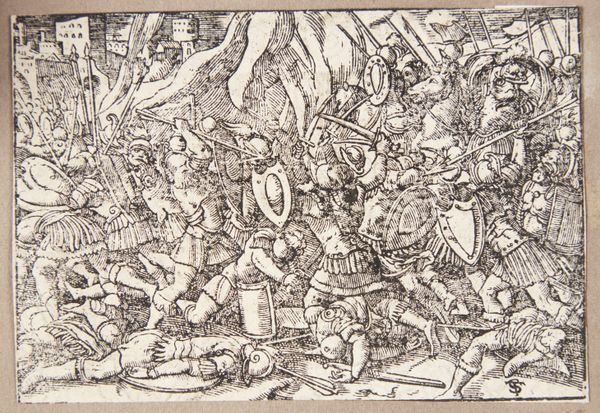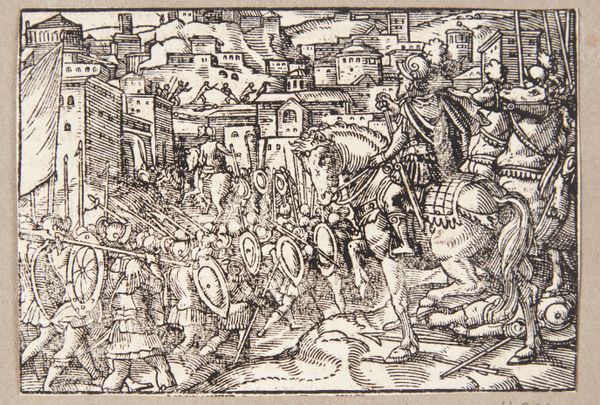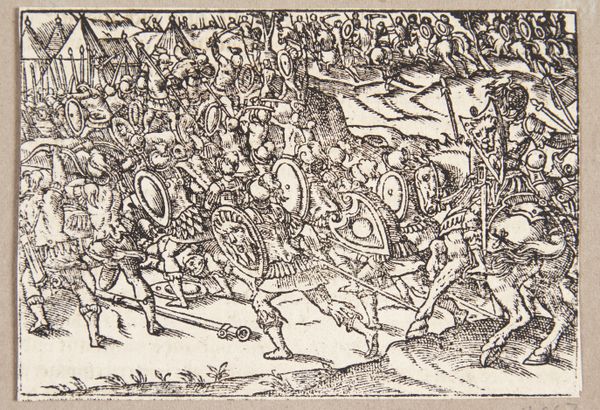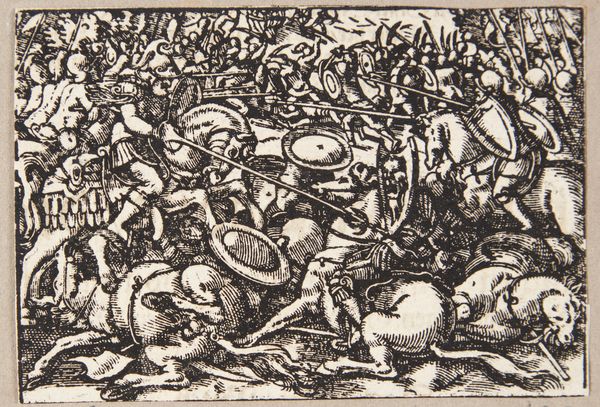
print, woodcut
#
narrative-art
# print
#
figuration
#
woodcut
#
line
#
history-painting
#
northern-renaissance
Dimensions: 75 mm (height) x 105 mm (width) (bladmaal)
Editor: This is “Den besejrede Syphax stilles for Scipio,” a woodcut made in 1574 by Tobias Stimmer. It feels incredibly busy, like a snapshot of pure chaos in the middle of a battle. What kind of narrative context are we seeing here? Curator: This piece throws us right into the theatre of power and conquest, doesn't it? Stimmer, working within the Northern Renaissance tradition, illustrates a moment of Roman triumph. Think about what it meant to depict historical subjects, particularly Roman history, during this era. It's not just storytelling, it's a commentary on contemporary European power dynamics, right? Editor: So, is it fair to assume the artist's goal was not merely about historical documentation? It strikes me that Syphax appears… humbled, yet his posture still projects authority. Curator: Precisely! Consider the intended audience. Stimmer's woodcuts were often disseminated widely through print. By portraying Syphax with that lingering sense of authority even in defeat, he might be subtly questioning the absolute nature of power. Do you see any echoes of contemporary socio-political unrest within this artwork? Editor: That's interesting. I hadn't thought of it that way. Maybe the piece subtly resonates with anxieties about rulers, victory, and defeat during that era. Is this maybe an interpretation, rather than pure fact? Curator: History is always an interpretation, wouldn’t you agree? This work underscores how images are potent carriers of social and political discourse, shaping perceptions of power long after the depicted events. Editor: I see your point. Looking at it again, knowing the context shifts the way I interpret it. Thanks for helping me understand the work through its historical influences and how it might reflect Stimmer’s society. Curator: Absolutely. Examining historical art through the lens of power relations adds another rich layer of appreciation to the artist's intentions and potential socio-cultural significance.
Comments
No comments
Be the first to comment and join the conversation on the ultimate creative platform.













